10 Easy Ways to Treat and Prevent Frequent Diaper Rash
How to treat frequent diaper rash and prevent it from coming back.
Is your baby constantly getting diaper rash? Does is seem like that rash just keeps coming back once you’ve finally managed to get rid of it?
As an Amazon Associate I earn from qualifying purchases.
Trust me, you are not alone. Many babies have sensitive skin and suffer from frequent diaper rash.
Diaper rash sucks.
It’s painful for baby, which is painful for Mom. When my daughter cries in pain during diaper changes because of her rash, it breaks my heart for her.
It can also be a big inconvenience. When you’re out in public or on the road, it can be VERY inconvenient to constantly be changing diapers to prevent the rash from getting worse.
Picture your life with your baby rarely ever getting diaper rash, and being able to get rid of it as soon as it does flare up. Picture your life with baby NEVER getting diaper rash. Baby would be happier, you would spend less time at the pediatrician, life would be a little more convenient.
Now–let’s make this happen.

Quick Access:
- frequent diaper changes
- use gentle wipes
- go diaper-free
- avoid harsh soaps
- the right cream combo
- use an applicator
- taking a break from cream
- quality diapers
- probiotics
- see a dermatologist
1. Frequent diaper changes

Yes, it’s an inconvenience, but frequent diaper changes are one of the MOST important steps in preventing and treating frequent diaper rash.
This is especially true with poopy diapers. I don’t know about you, but my daughter is known to get diaper rash IMMEDIATELY after she poops. One minute she would be rash free, and then the MINUTE she pooped–diaper rash.
You’ve probably been there. If not, consider yourself lucky.
So, this is a pretty obvious one, but also very important one. Once baby develops a diaper rash, change that diaper as soon as you notice it’s wet.
Check it often. The more time baby sits in that wet diaper, the more time that rash has to get worse.
2. Use gentle wipes
This is another very important step. Having the right wipes can make all the difference.
Many diaper wipes contain harsh chemicals that irritate sensitive skin. What might be totally fine for some babies might quickly create a rash for others.
Even diaper wipes marketed as sensitive can be irritating.
If your baby has extra sensitive skin like mine did, Water Wipes are the ONLY diaper wipes I would recommend.
Water Wipes

Water Wipes are the MOST gentle wipes on the market. Even brands that boast about being 99% water don’t compare to Water Wipes. Trust me, I’ve tried them all.
There is no other brand on the market that is more gentle or that has less ingredients.
But how can you tell the difference?
You can tell a huge difference by the texture of the wipes. Water wipes are almost literally JUST water, and you can tell. They don’t have a smell, they just feel like thin cloth and water.
Other wipes marketed as gentle, sensitive, or 99% water will have a different texture. They will have a bit of suds to them. This may give the impression that they are antibacterial, but the ingredients creating those soap suds can be very irritating to sensitive skin.
If the wipes you are using have any kind of slight soap suds or scent to them, they may contain ingredients that are irritating your baby’s skin. Water Wipes are almost literally ONLY water, with only the teensiest bit (.1%) of grapefruit seed extract as a preservative.
They are pediatrician recommended for a reason. They might be a little more expensive than other brands, but I promise, it’s worth it.
Your baby’s bottom will thank you.
For severe rash:
If you’re working with a severe rash, you may want to take a little extra care.
As an extra step, when baby has poopy diapers, you want to use a slightly different approach.
Because poop can be extra irritating, if baby’s diaper rash is already severe, you may want to gently pat the diaper area with a warm/lukewarm wet, soft washcloth with a small amount of gentle soap. This is to clean the skin of bacteria from the poop.
After you GENTLY pat the area with a mild soap (like Dove Sensitive Skin Baby Wash), GENTLY pat the area dry with a clean, dry cotton wash cloth.
Before replacing the diaper, let baby go diaper-free for a bit.
3. Go Diaper Free

This is what I call it when we let baby go diaper-free for a while to air out that diaper area. Call it naked baby time, porky-piggin’ it, free-balling, whatever–just do it. Airing out that baby bum is the best way to prevent frequent diaper rash.
Letting your baby go diaper-free for at LEAST a few minutes a day makes a HUGE difference. It allows that diaper area to breath, allowing the rash to heal.
It’s kind of like a band-aid wound. Eventually you just gotta let it air out for a bit to let the wound heal.
Yes, you might have to clean up a pee puddle or two. You might even (God forbid) end up cleaning up poop, depending on how long baby airs out.
(If your dealing with a mobile toddler, I recommend NOT doing this if you think they’re due for a poop soon. It can lead to a very not fun time cleaning poop off all surfaces of the house).
Changing pad liners
One product I found that was a HUGE game-changer in preventing frequent diaper rash was Peekapoo-Disposable Changing Pad Liners, or, as I like to call them, puppy pads.

These allow you to lay down a disposable pad that acts as a diaper so you can let baby free-ball all you want without having to clean up any mess.
If you have a mobile baby or toddler, you can set these on the couch and have baby sit for a while with some screen time, or anything else that gets them to sit in one spot for a few minutes.
I like to use this tactic after bath time when my daughter is already naked and clean. I’ll lay down a liner on the couch, sit her on it with a towel and blanket over, and turn on her favorite tv show for a bit.
Then, if she pees–no worries–it’s absorbed by the liner and mess-free.
4. Avoid using harsh soaps

When giving baby a bath, avoid using harsh soaps.
These can irritate diaper rash and can trigger yeast infections in baby girls.
If baby has sensitive skin, always avoid using bubble bath.
Instead, use a mild baby soap sparingly. I like to use Babyganics Baby Shampoo + Body Wash because it’s gentle and comes with a foaming pump, which saves time on lathering.
If baby is prone to yeast infections, avoid using soap at all on the genitals, since any amount can trigger a yeast infection in some girls.
Rinse off diaper diaper area with clean water before getting out of bath for baby girls prone to yeast infection or vaginitis. Keeping a squirt bottle on hand with clean, warm/lukewarm water is a handy way to do this.
This was a tip given to use by our pediatrician that just ensures the genitals are rinsed clean from the dirty/soapy water.
5. Find the right cream combo

Finding the right combination of diaper rash creams makes a world of difference in preventing frequent diaper rash.
For babies prone to diaper rash, the best cream combo is to double up by using:
- a skin protectant (petroleum based)
- a barrier cream (containing zinc)
Start with a thick layer of skin protectant, followed by a thick layer of barrier cream. Pediatricians recommend layering it on thick, like you’re icing a cake. The thicker, the better!
I’ve tried a lot of cream combos, and my favorite is:
- Aquaphor, followed by
- Pinxav
Aquaphor is my favorite skin protectant to use as a base layer because of the consistency. It’s very thick, which makes it easy to spread a layer of barrier cream on top.
Pinxav is my favorite barrier cream, and it works perfectly as a second layer on top of Aquaphor. It’s the thickest barrier cream I’ve come across, and it doesn’t leave a super greasy, gloopy feeling behind like other barrier creams do (I’m looking at you, Butt Paste). It also has ingredients that are soothing and healing. For an in-depth review of Pinxav, check out this article
For more information on which creams to use when, check out Diaper Rash Creams Explained.
6. Use a rash cream applicator
Another handy tool to have is a diaper rash cream applicator.
This is nice to have for a few reasons.
- It’s more hygienic.
- It prevents germs from transferring from your hands to baby’s bottom, which can create or aggravate the rash
- It prevents germs from transferring from baby’s bottom to your hands
- It’s cleaner
- It prevents the spread of cream to baby’s clothes, changing table, etc.
7. Try taking a break from diaper rash cream
I know, this sounds completely contradictory to the previous suggestion. BUT–if you’ve been applying rash cream after each diaper change and baby keeps getting a rash, especially a yeast infection, it’s possible that there is just too much moisture in that diaper area being all confined.
Pick a time where you know baby isn’t likely to poop (maybe right after a big poop), and try leaving off the diaper rash cream completely. It might help to keep the whole diaper area more dry and breathable, especially if baby is prone to yeast infections. (This is also why going diaper free is so important!!)
Trust me, I know that this part (knowing whether or not to use diaper rash cream and the right combination of cream) is very confusing. It is really about guess and check, and what is going on with your baby and their own individual needs and bodies.
8. Use quality diapers
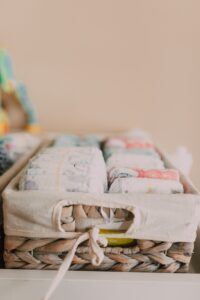
Another important consideration is the kind of diapers being worn.
Are they:
For in-depth info on diapers for sensitive skin, check out this article.
9. Give probiotics
Here’s one many of us don’t think about.
Just like in many adult women, baby girls tend to get yeast infections (or Thrush in infants) when taking antibiotics.
When baby is on antibiotics, it’s a good idea to also give them probiotics to prevent thrush or yeast infection. Culturelle was recommended by my pediatrician, and it has definitely helped to prevent yeast/Thrush for my daughter.
10. See a dermatologist
If you feel like you’ve tried everything and your baby is just simply extra prone to frequent diaper rash, ask your pediatrician for a referral to a dermatologist. Dermatologists are trained in sensitive skin and might be able to suggest something that the doctor missed.
I’ve been there, and I was SO glad we saw a specialist because it made a huge difference. My daughter was prescribed a highly concentrated hydrocortisone cream, and after trying everything under the sun (including using a prescription compound cream for over a month) that finally did the trick!
When to call the pediatrician
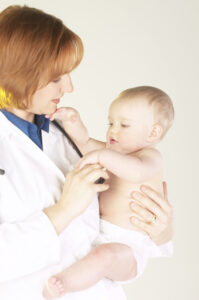
It’s important to know when to call the pediatrician.
Definitely call the pediatrician if:
- you suspect the rash might be yeast (this will need to be treated differently)
- it’s blistering
- it’s accompanied by a fever
- it just won’t go away after you’ve tried everything
- you can tell the rash is painful
- baby keeps getting diaper rash over and over
When in doubt, take baby in. It never hurts.
Rashes can be tricky to diagnose over the phone, or by frantically searching for info online. So if your gut is telling you to, just take baby in. It often just takes the doctor to be able to look at baby in person to tell exactly what’s wrong and make it right.
Conclusion
If your baby suffers from frequent diaper rash, I feel you. I’ve been there.
Luckily, there are a few things you can do to help:
- frequent diaper changes
- use gentle wipes
- air baby out
- avoid using harsh soaps
- find the right rash cream combo
- use a rash cream applicator
- try taking a break from rash cream
- quality diapers
- probiotics
- see a dermatologist
I hope this article helps. Good luck, Mama!
xoxo
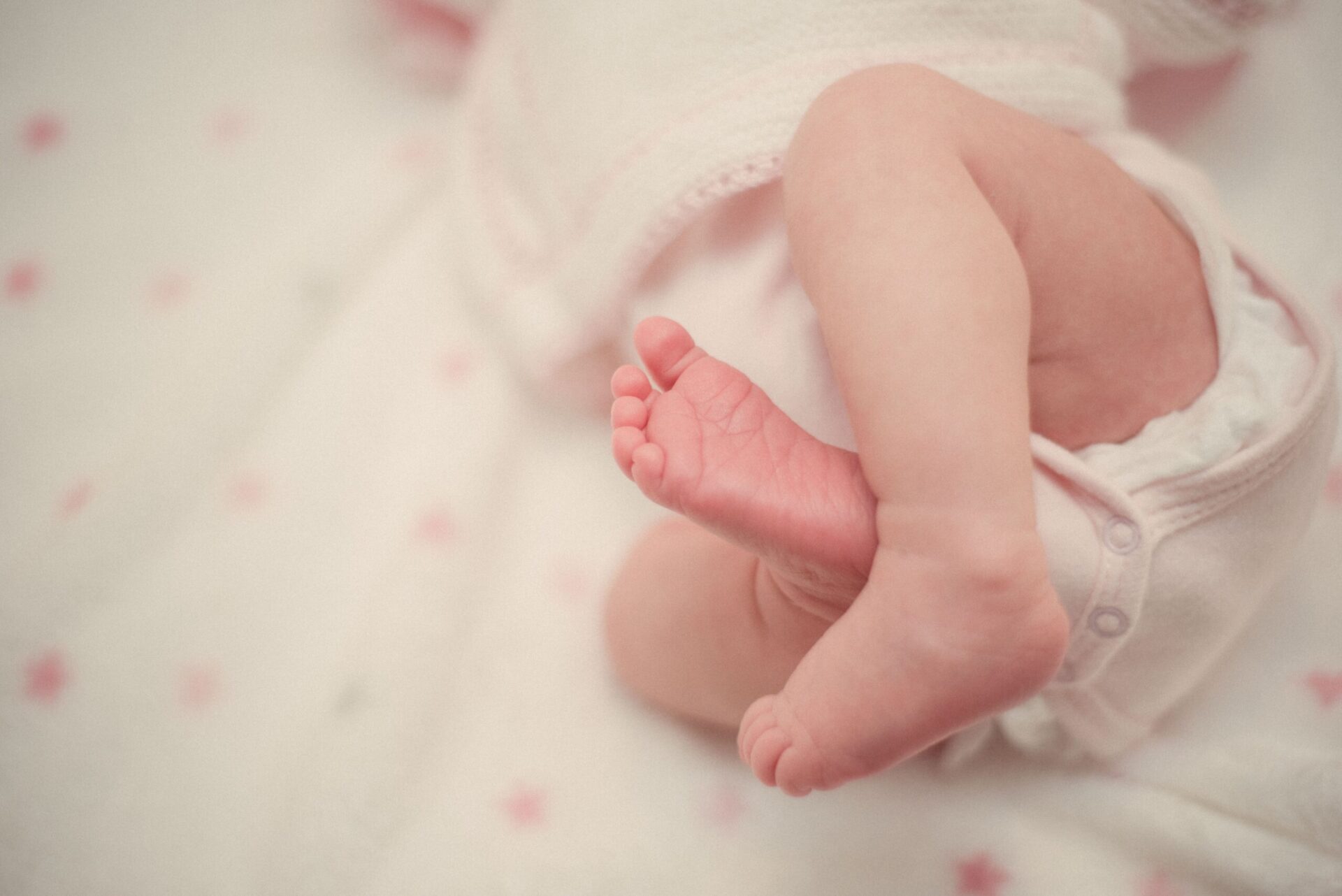

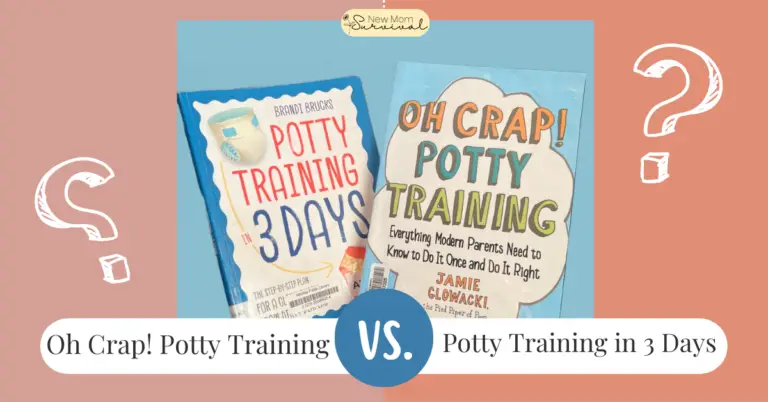
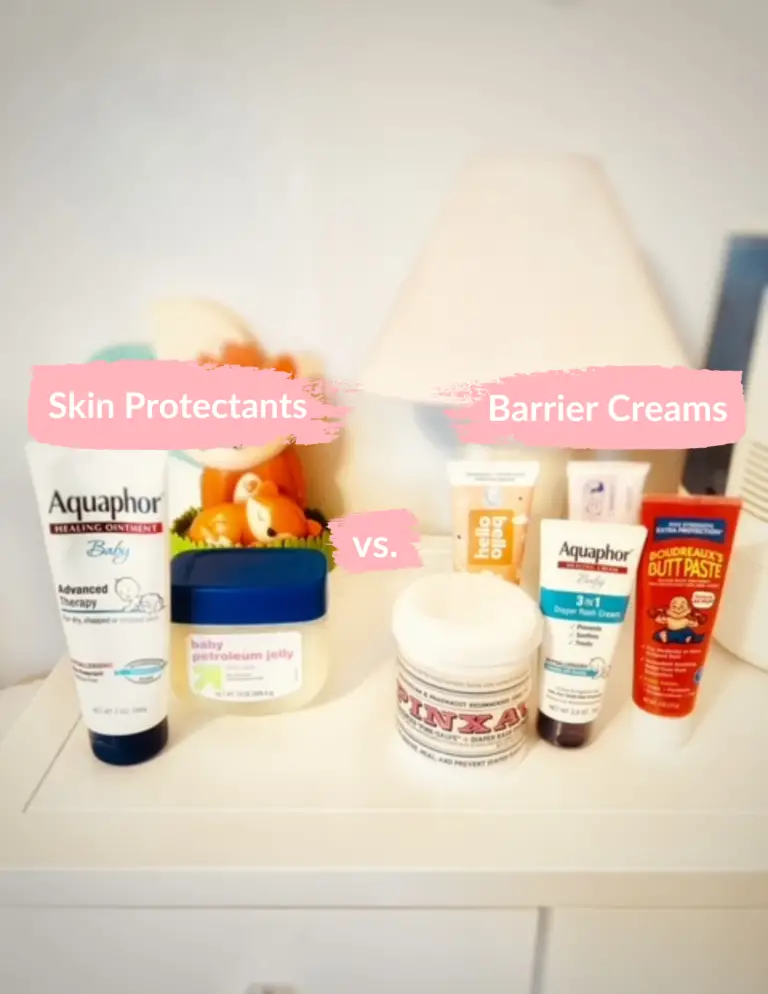

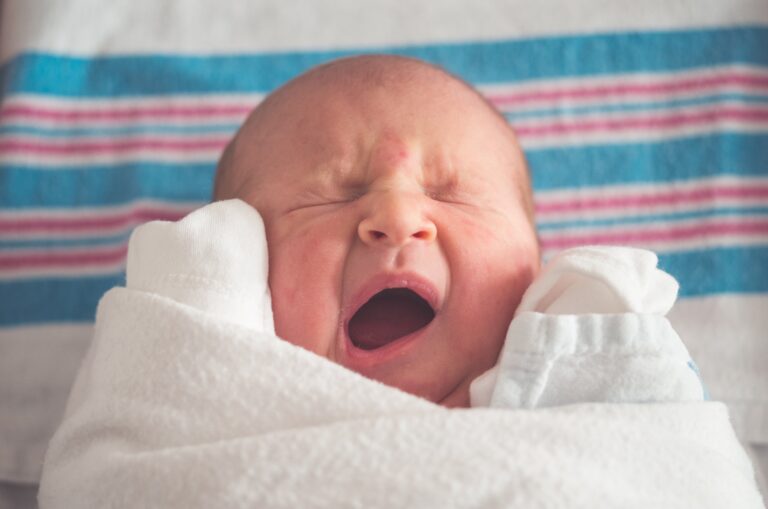
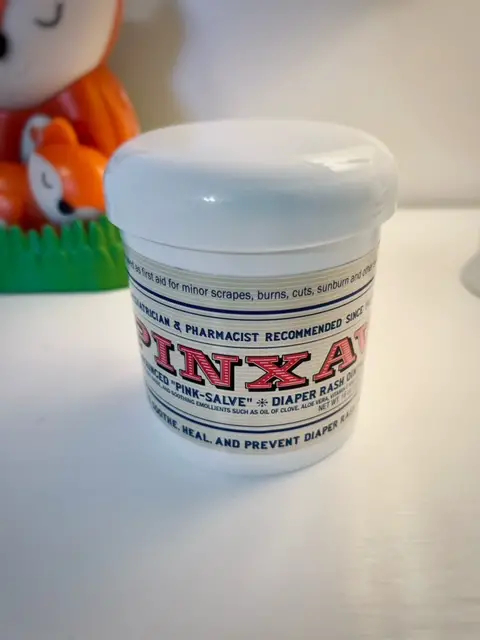
One Comment